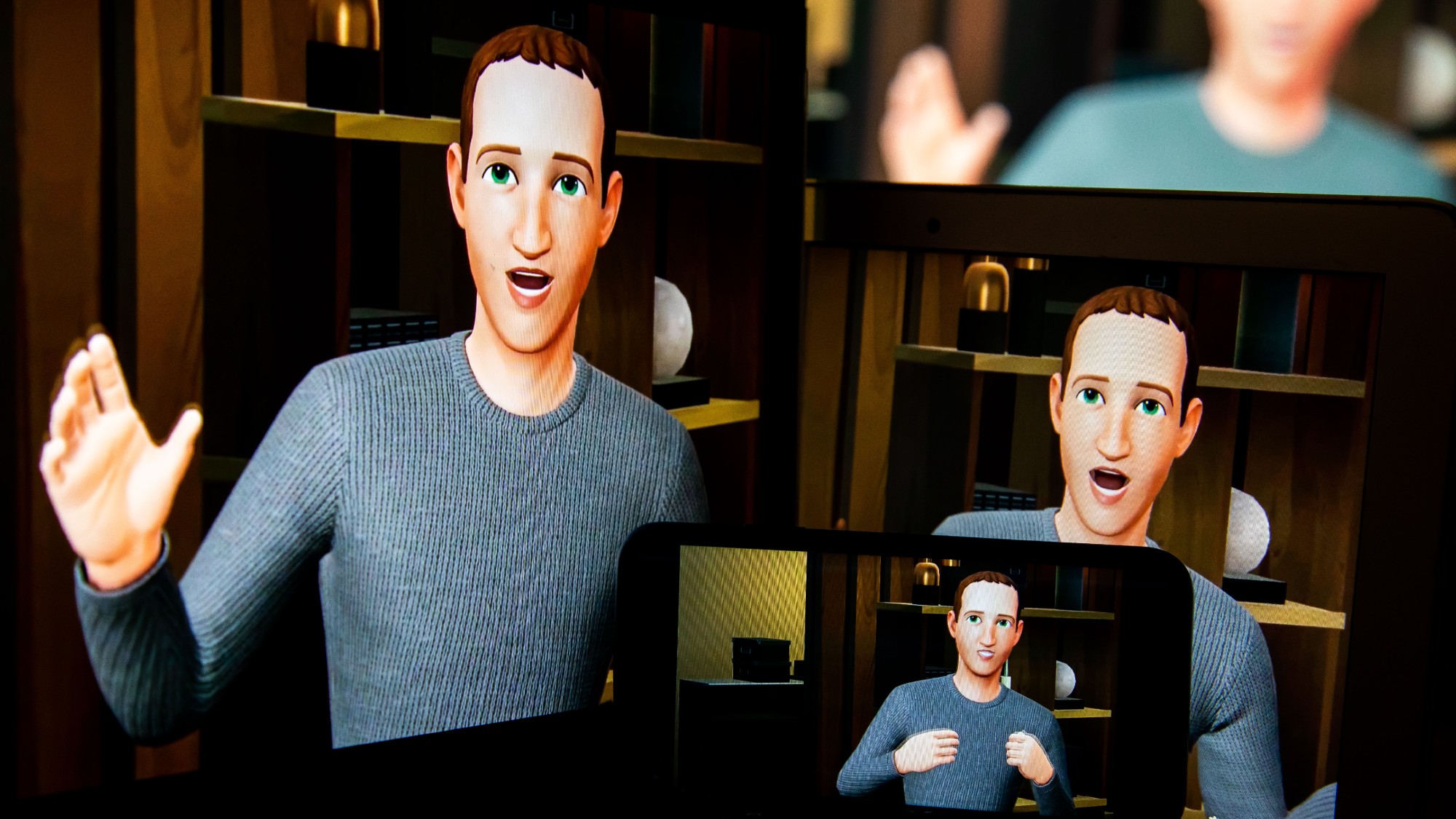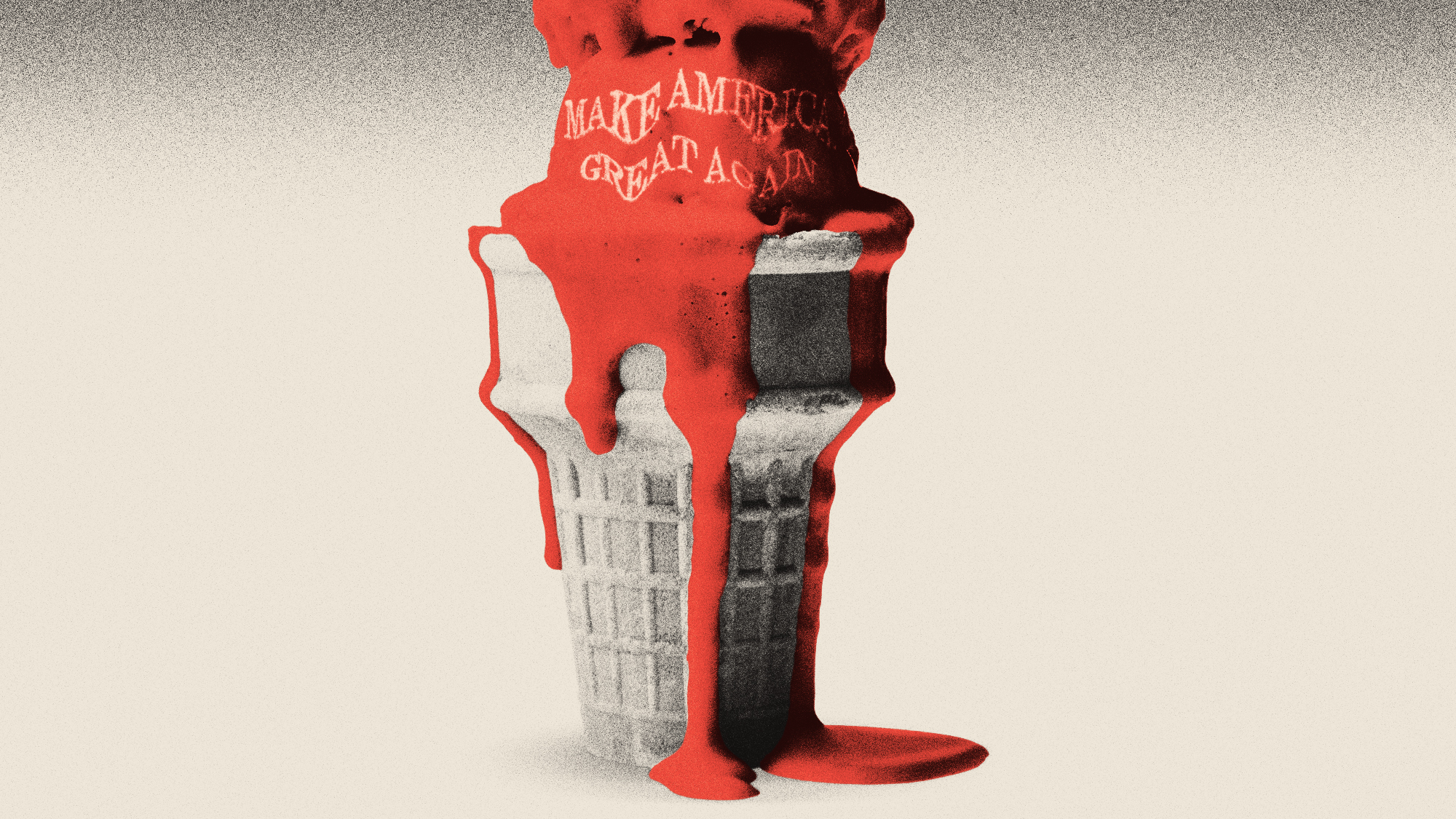Exhibit of the week: Roy Lichtenstein: A Retrospective
The artist's comic-book-style canvases are even more impressive when seen in the context of his full career.
The Art Institute of Chicago
Through Sept. 3
Roy Lichtenstein saw our Facebook present half a century before it arrived, said Blake Gopnik in Newsweek. As “popular and fun” as his enormous comic-book-style canvases have long been, they might be even more impressive when seen in the context of the late painter’s full career. Until he was almost 40, this “founding figure of pop art” worked primarily as an abstract expressionist. Then came his breakthrough: Look Mickey, from 1961, borrowed an image of Donald Duck and Mickey Mouse from a children’s book and launched a 35-year probe into the universe of ready-made imagery. Lichtenstein (1923–1997) was more than a parodist. He was “the first artist to give us a whiff of the Pinterest culture we live in today,” where “prepackaged images yield our most important contact with reality, and the rest of our experience then comes filtered through them.”
The Week
Escape your echo chamber. Get the facts behind the news, plus analysis from multiple perspectives.

Sign up for The Week's Free Newsletters
From our morning news briefing to a weekly Good News Newsletter, get the best of The Week delivered directly to your inbox.
From our morning news briefing to a weekly Good News Newsletter, get the best of The Week delivered directly to your inbox.
Maybe we read too much into his paintings, said Jonathan Wilson in TabletMag.com. Consider Whaam!, the 1963 Lichtenstein that depicts a comic-book fighter pilot blasting another plane from the sky. At the “wonderfully comprehensive” retrospective now hanging in Chicago, the painting still looks glorious, as do his huge close-ups of comic-book women filling the images’ speech bubbles with brief, breathless prose. But when Whaam! was hung in London in 1968, we were all pretty certain that Lichtenstein had intentionally exploded the lie that the violence of America’s distant wars was as harmless as that in a dime-store comic. “Nothing could have been further from his intention,” it turns out. The Lichtenstein we see here was interested in art only, not politics. He’s “an ironist,” not a social critic.
Still, it’s remarkable what he was able to achieve with his chosen idiom, said Kevin Nance in the Chicago Sun-Times. His monumental early painting of an automobile tire makes that mundane object “so strangely exquisite that you long to possess it.” When he turned to landscapes and sunsets, his cartoonish lines and Ben-Day-dot shadings didn’t prevent viewers from “experiencing a vestige of the sublime.” What’s more, he could be effective even when he wasn’t pleasing the eye, said Lori Waxman in the Chicago Tribune. His late nudes, from the mid-1990s, rework his bright, upbeat 1960s imagery into something more unsettling. Partly this is because “it’s hard to contemplate the brazen objectification of women.” But most striking is the way Lichtenstein’s trademark dots seem to have “come unhinged.” They’re no longer smile-inducing. Instead, they suggest “the proliferation of disease.”
A free daily email with the biggest news stories of the day – and the best features from TheWeek.com
-
 Metaverse: Zuckerberg quits his virtual obsession
Metaverse: Zuckerberg quits his virtual obsessionFeature The tech mogul’s vision for virtual worlds inhabited by millions of users was clearly a flop
-
 Frank Gehry: the architect who made buildings flow like water
Frank Gehry: the architect who made buildings flow like waterFeature The revered building master died at the age of 96
-
 Is MAGA melting down?
Is MAGA melting down?Today's Big Question Candace Owens, Tucker Carlson, Laura Loomer and more are feuding